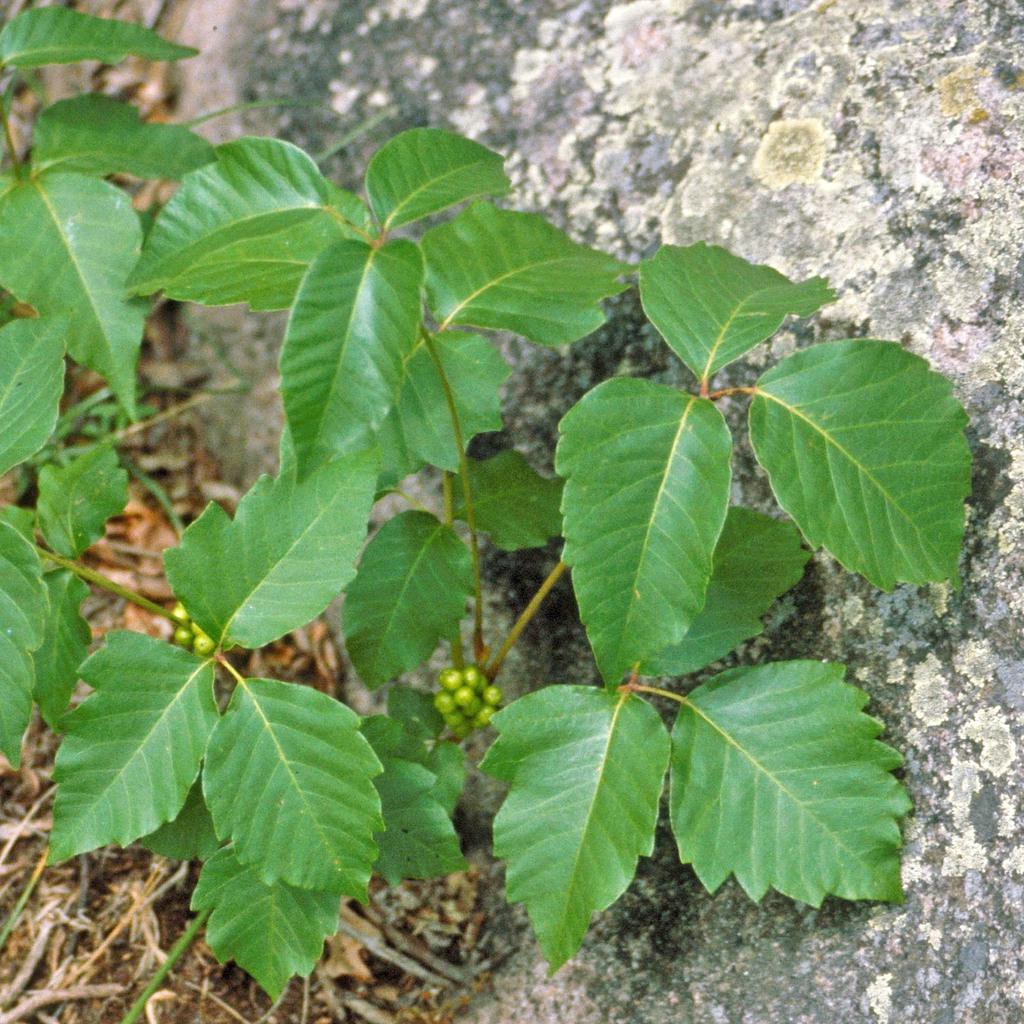Poison Ivy, as the name indicates, contain a poisonous resin. Touching any part of the plant can cause a reaction, including itchiness and blisters. They can be found in all parts of Canada and the United States apart from Newfoundland and California. They are commonly found at forest edges or clearings as well as along fences, roads, or railway lines.
Poison Ivy’s leaves consist of 3 almond-shaped, pointed leaflets ("leaves of three, let it be") that are red in the spring, green in summer, and yellow, orange, or red in the fall. The middle leaflets have a longer stalk than the two side ones. The leaflets can have either notched or smooth edges.
Poison Ivy can grow as a shrub or as a vine, attaching itself firmly to a tree or post. Clusters of cream-colored flowers can be seen in June/July, turning to waxy, pale-colored berries in September.
Did you know? The poisonous resin helps the plants to retain water and was not designed as a defensive measure.






